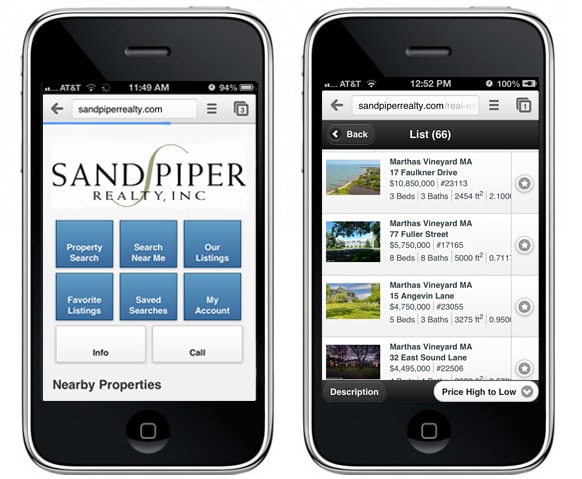Creating Mobile Websites for Real Estate Agents and Offices
As any marketer knows, you should always think about your audience and their habits. When designing your mobile site, make sure you’re keeping the mobile user in mind rather than the desktop user (yes, they are different). While someone who visits your mobile site might also visit your standard site, their behavior may be different. Someone visiting your site on their phone is more likely to be looking for specific information on the fly and may bail out faster if they have to dig to find it.
#1 Make sure your content is available and easy to find.
By including a simple sitemap on your mobile site, you can make sure visitors can find the pages they’re looking for. In some cases, you might even want to leave out a few pages from the sitemap that mobile visitors would not normally check out, such as long agent bios or lengthy article pages.
#2 Keep it simple and straightforward.
If your visitors are coming to your site to find real estate, your property search should be one of the first things they see on the mobile site. You might have a lovely header on your full site, but it’s best to stick with simplicity on a mobile website and focus on the content. Remember that the screen might be small and if an image takes up the majority of that space, people may not scroll below to find other important content.
#3 Cut back on text entry fields.
In your mobile site’s real estate search, think about how the criteria will look on a mobile device. If you have a lot of complicated drop-downs and text entry field, people may give up and leave the site. This is another area where you’ll have to think about how these features will look on a mobile device because if you have a 25 check-boxes that are listed below one another, visitors will have to scroll pretty far down the page to perform their search.
#4 Use mobile-friendly features.
Make it easier for visitors to use your site by adding some simple features such as click-to-call, which allows people to click on your company’s phone number and automatically dial it from their phone. The auto-locate feature is great for real estate because it helps users find properties in the area they’re living in without typing in their address (shown to the right). A map of your company’s location might also be helpful so that visitors can find directions to your office easily.
The Results
After we rolled out our new mobile site platform in July 2012, we started seeing improvements in engagement metrics for nearly all of our clients. The table below shows the change in traffic and engagement after we launched the new platform on one of our sites. As you can see, the sites not only look better, but they’re keeping visitors on the site longer. They’re also providing our clients with more leads. So when you’re trying to develop a mobile app or mobile version of your website, remember to think about how it will work on a various devices and what types of content visitors will be looking for. By tailoring your site to a mobile user, you can drastically improve their experience and your site’s conversion rate.









